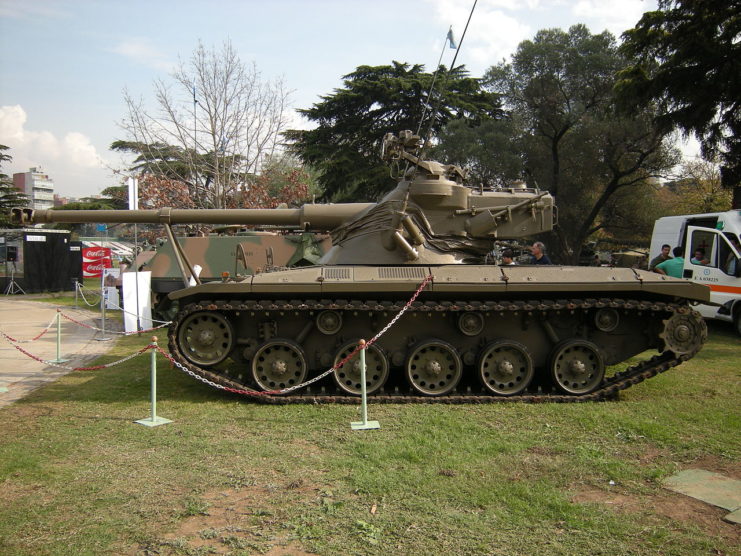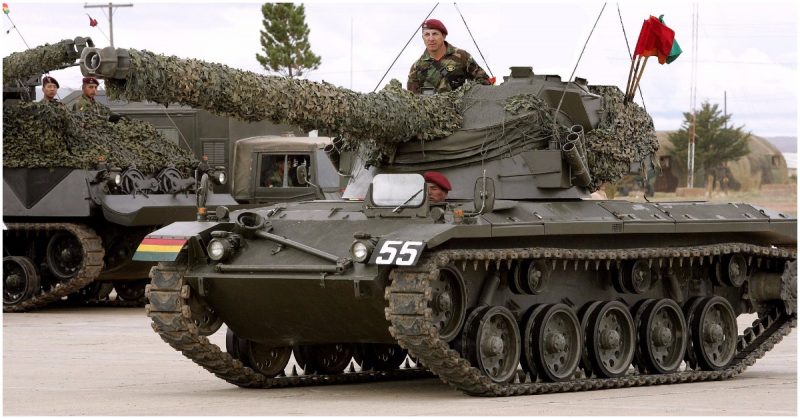After WWII, the Austrian military went through a series of reforms to reconstitute itself as the armed wing of the newly formed Austrian state. It lost its independence after the 1938 Anschluss when Nazi Germany annexed it.
While Allied forces mostly supplied the military, the Austrian authorities were considering their options in developing a domestic weapons industry. The core of armored units in Austria were the American M47 Patton and the British Charioteers, which replaced the Cromwell tanks after the war.
As early as 1956, a design was laid out for the first Austrian APC, which went into production in 1961. Designated as Saurer 4K 4FA, by the Saurer Werk company, the tracked vehicle later served as a basis for the SK-105, nicknamed Kürassier after the elite cavalry units which played a prominent role throughout the history of Austrian war efforts.
In 1967 the chassis of the Saurer APC was heavily modified in the process of turning the armored transport into a light tank to fulfill the requirements of a mobile anti-tank vehicle. It was the first prototype, while the serial production commenced in 1971.
To fit such a high caliber weapon on the Kurassier, the designers decided to use an oscillating turret, which had already been tested on the French AMX 13. At the time, only the French and Austrians were involved in producing tanks with oscillating turrets.

Remaining relatively light-armored, the tank was fitted with a 105 mm rifled gun ― capable of penetrating most main battle tanks of the era, such as the Soviet T-54/55. Its own armor, on the other hand, could withstand 20 mm (0.79 in) caliber rounds to the front, while the sides could barely repel light-arms fire.
The contrast between firepower and protection was, thus, deemed the biggest flaw of the design ― one which was expected to be overcome with mobility and speed, for the Kurassier could travel as fast as 70 km/h (43 mph). The engine which powers the Austrian light tank is located in the rear. A 6-cylinder diesel, 320 hp (238 kW), produced by Steyr, it was specially designed to overcome mountainous terrain, with improved climbing capability.
It made the tank adaptable to the Austrian Alpine landscapes, as its designers hoped to overcome its weak armor with smart use of the terrain. It was capable of climbing a gradient of 75%; running on a side slope of 40%; going over a vertical step of 0.8 m, or crossing a trench 2.4 m wide.
Much like the AMX 13, the SK-105 is a lightweight tank designed to fit the C-130 Hercules transport aircraft for quick deployment and support of airborne troops.
Unlike its French counterpart, the first SK-105 used a semi-automatic autoloader and not the fully-automatic version. It eliminated the use of a loader, reducing the crew to three, but it included a very uncomfortable trait of manually replacing the barillet magazine from the outside.
The SK-105 A2 version managed to solve that problem, while the A3 version dealt with accuracy. The initial Kurassier had an unstable gun, meaning that the tank had to stop moving to achieve an accurate shot.
Together with these significant improvements came the armor add-ons which reinforced the frontal armor, making it immune to 35 mm caliber rounds, but these additions were mainly applied to export versions.
Besides the Austrian Armed Forces, who abandoned the use of the SK-105 in the early 1990s, the Kurassier was exported mainly to countries in Africa and South America. The most prolific user of the Kurassier is Argentina, with 118 vehicles, which were modernized in 2005 and designated as the Patagon tank.
Other users include Bolivia, Botswana, Brazil, Morocco, and Tunisia. It is estimated that more than 700 units of the SK-105 have been produced since 1971.
